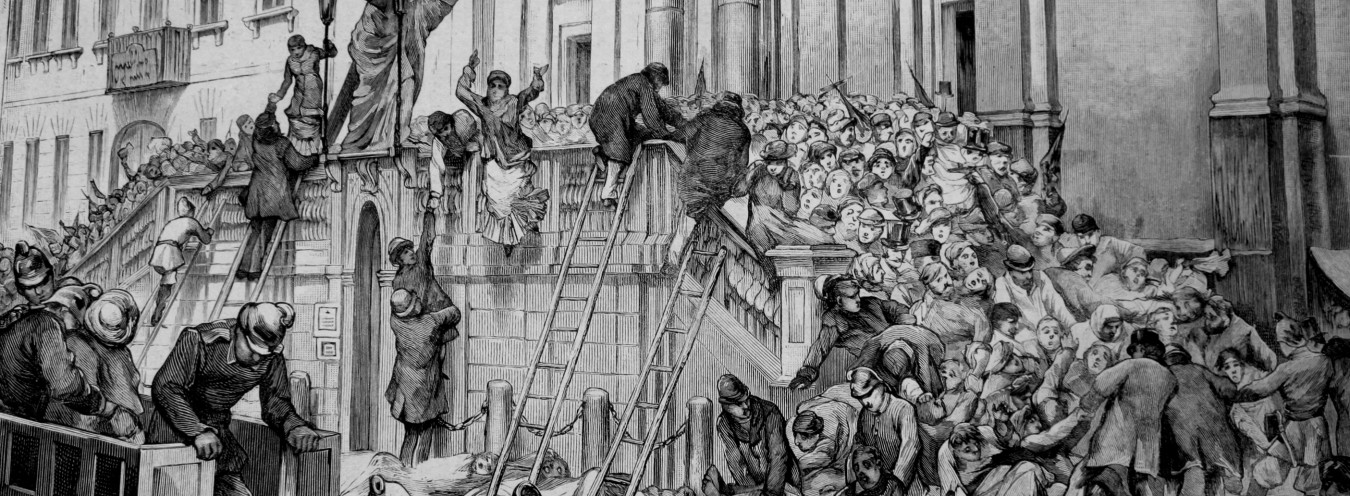
Religious Conflicts
It was probably not to antagonise censorship that The Doll does not mention any faith-related conflicts, bound to happen in a metropolis of such religious diversity as Warsaw. In reality, the divisions were very deep and sometimes caused a considerable turmoil. When they did, they were always exacerbated by other tensions: national, economic, social, ethnic, or racial. It would therefore be a mistake to classify them as purely religion-oriented, all the more so as the only conflict actually touched upon by Prus – the feud between Poles and Jews that was aggravating throughout the 1870s – was discussed in the novel in terms of socio-economy, culture, and morality.
In between the final instalment of The Doll in the press and its first book publication, Warsaw witnessed a bloody pogrom of Jews. It started on 25 December 1881. Someone shouted “Fire!” during the Christmas Mass in the Holy Cross Church. The resulting panic stampede took the lives of 20 people and caused injuries to many more. Once it was obvious that the warning was fake, rumours spread that it had been called by a Jewish pickpocket who thus tried to divert attention from himself. The lynch mob started to smash windows of the Jewish shops and assail Jews in the street. Some Polish people started to defend them. The incident sent ripples through the press; among others, a famous Polish artist Cyprian Norwid contributed an article in defence of the Jewish population.
Unfortunately, the anti-Jewish atmosphere lingered for some time after the pogrom was over. Anti-Semitic slogans continued to be written on the walls, window panes in synagogues were broken, and Jewish rituals were largely suspended as people were afraid to celebrate weddings and holidays.
The pogrom also sewed the seeds of doubt and despondency in the minds of Warsaw positivist thinkers who had earlier believed in the integration of the Christian and Jewish communities. Already on 29 December 1881, Bolesław Prus diagnosed the anti-Jewish riots to be a symptom of moral decline in his weekly press columns Kroniki, and Aleksander Świętochowski found them to be the expression of the basest human instincts and concluded that, if such disparate cultures were unable to coexist peacefully, Jews must be forced to assimilate (this wild idea was ridiculed by Prus in his column of 21 February 1882). The 1881 pogrom of Jews turned Warsaw life upside down for some time. No one had ever seen a similar incident in this city.
Still, at the time of The Doll, the main source of religious conflicts in Warsaw was the intensifying Russification, and, consequently, an absolute endorsement of the Eastern Orthodox Church over any other denomination (mainly, though not exclusively, Roman Catholicism). The Tsar’s religious policy in Warsaw, as in all Congress Poland, reached its symbolic apogee in multiplying Eastern Orthodox churches by the erection of new buildings and the conversion of former Roman Catholic churches or lay edifices.
→ Anti-Semitism; → Religions; → Jews;
Bibliografia
E. Bergman, “Nie masz bóżnicy powszechnej.” Synagogi i domy modlitwy w Warszawie od końca XVIII wieku do początku XXI wieku, Warsaw 2007.



